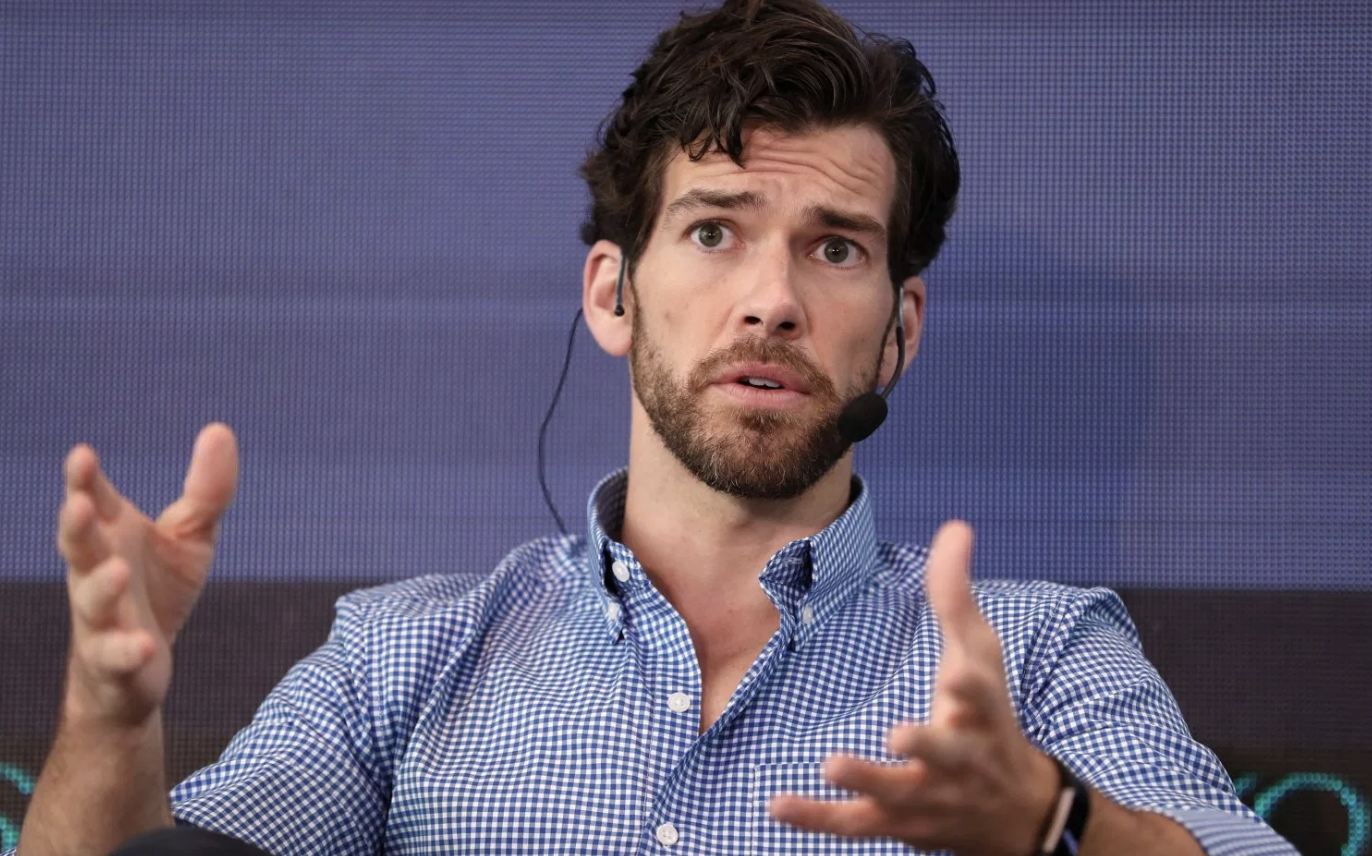With cinnamon, fruit and mint-flavored nicotine gum, is LA’s Lucy Goods the next Juul?
David Renteln, the Los Angeles-based co-founder of Soylent and the co-founder and chief executive of new nicotine gum manufacturer Lucy Goods, thinks there should be a better-tasting, less-medicinal offering for people looking to quit smoking.
That’s why he founded Lucy Goods, and that’s why investors, including RRE Ventures, Vice Ventures and FundRX joined previous investors YCombinator and Greycroft in backing the company with $10 million in new funding.
“We reformulated nicotine gum and the improvements that we made were to the taste, the texture and the nicotine release speed,” said Renteln.
These days, any startup that’s working on smoking cessation or working with tobacco products can’t avoid comparisons to Juul — the multi-billion-dollar startup that’s at the center of the surge in teen nicotine consumption.
“The Juul comparison is something that’s obviously top of people’s minds,” Renteln said. “It’s important to note that there’s a huge difference in nicotine products.”
Renteln points to statements from former Food and Drug Administration chief, Scott Gottlieb (who’s now a partner at the venture firm New Enterprise Associates), which drew a distinction between combustible tobacco products on one end and nicotine gums and patches on the other.
“Nicotine isn’t the principle agent of harm associated with these tobacco products,” said Rentlen. “It’s addictive but not inherently bad for you.”
Lucy Goods also doesn’t release its nicotine dosage in a concentrated burst like vapes, which are designed to replicate the head rush associated with smoking a cigarette, said Renteln.
“It is a stimulant and they will get a sensation, but it’s not as intense as taking a very deep drag of a cigarette,” Renteln said.
The company’s website also doesn’t skew to young, lifestyle marketing images. Instead, there are testimonials from older, ex-smokers hawking the Lucy gum.
“I don’t want anyone underage using any nicotine product or any drug in general… [and] the flavors have been around for a long time.”
Joining Renteln in the quest to create a better nicotine gum is Samy Hamdouche, a former business development executive at several Southern California biotech startups and the previous vice president of research at Soylent.
For both men, the idea is to get a new product to market that can help people quit smoking — without a social stigma — Renteln said.
“Smoking is the leading cause of preventable death in the United States claiming over 480,000 lives every year and costing the U.S. an estimated $300 billion in direct health costs and lost productivity. Lucy is committed to bringing innovative nicotine products to the market to eliminate tobacco related harm and we’re proud to be part of their journey,” said RRE investor, Jason Black in a statement.

Powered by WPeMatico
Deviceplane wants to bring over-the-air updates to Linux edge devices
Deviceplane, a member of the Y Combinator Winter 2020 class, is developing an open-source toolset to manage, monitor and update Linux devices running at the edge.
“We solve the hard infrastructure problems that all these companies face, including network conductivity, SSH access, orchestrating and deployment of remote updates, hosting, application monitoring and access and security controls. It’s 100% open source, available under an Apache License. You can either host it yourself or you can run on the hosted version,” company founder and CEO Josh Curl told TechCrunch.
He could see this working with a variety of hardware, including robotics, consumer appliances, drones, autonomous vehicles and medical devices.
Curl, who has a background in software engineering, was drawn to this problem and found that most companies were going with home-grown solutions. He said once he studied the issue, he found that the set of infrastructure resources required to manage, monitor and update these devices didn’t change that much across industries.
The over-the-air updates are a big part of keeping these devices secure, a major concern with edge devices. “Security is challenging, and one of the core tenets of security is just the ability to update things. So if you as a company are hesitant to update because you’re afraid that things are going to break, or you don’t have a proper infrastructure to do those upgrades, that makes you more hesitant to do upgrades, and it slows down development velocity,” Curl said.
Customers can connect to the Deviceplane API via Wi-Fi, cellular or ethernet. If you’re worried about someone tapping into that, Curl says the software assigns the device a unique identity that is difficult to spoof.
“Devices are assigned an identity in Deviceplane and this identity is what authorizes it to make API calls to Deviceplane. The access key for this identity is stored only on the device, which makes it impossible for someone else to spoof this device without physical access to it.
“Even if someone were able to spoof this identity, they would not be able to deploy malicious code to the spoofed device. Devices never have access to control what software they’re running — this is something that can be done only by the developer pushing out updates to devices,” Curl explained.
The company intends to offer both the hosted version and installed versions of the software as open source, something that he considers key. He hopes to make money supporting companies with more complex installations, but he believes that by offering the software as open source, it will drive developer interest and help build a community around the project.
As for joining YC, Curl said he has friends that had been through the program in the past, and had recommended he join as well. Curl sees being part of the cohort as a way to build his business. “We were excited to be tapping into the YC network — and then being able to tap into that network in the future. I think that YC has funded many companies in the past that can be Deviceplane customers, and that can accelerate going forward.”
Curl wasn’t ready to share download numbers just yet, but it’s still an early-stage startup looking to build the company. It’s using an open-source model to drive interest, while helping solve a sticky problem.
Powered by WPeMatico
Daily Crunch: Sony unveils its first 5G smartphone
Sony announces a camera-centric phone, Microsoft offers more details about the next Xbox and a liquid biopsy startup raises $165 million. Here’s your Daily Crunch for February 24, 2020.
1. Sony announces its first 5G flagship, the triple lens Xperia 1 II
Sony has announced its first 5G smartphone: The Xperia 1 II — for the curious or confused, it’s pronounced “Xperia One, Mark Two.”
As ever with Sony — a major B2B supplier of image sensors to other smartphone makers — it has made the camera a huge focus. The Xperia 1 II packs three lenses that offer a selection of focal lengths (16mm, 24mm and 70mm) for capturing different types of photos, from super wide angle to portraits.
2. Microsoft offers a closer look at the next Xbox
The headline feature of the upcoming Xbox Series X is, naturally, a new processor. Built on top of AMD Zen 2 and RDNA 2 architecture, Xbox says the chip is able to deliver four times the processing power of the Xbox One.
3. Karius raises $165M for its liquid biopsy technology identifying diseases with a blood draw
Liquid biopsy technology has been widely embraced in cancer treatments as a way to identify which therapies may work best for patients, based on the presence of trace amounts in a patient’s bloodstream of genetic material shed by cancer cells. Karius applies the same principles to the detection of pathogens in the blood.
4. Europe’s Target Global raises new €120M early-stage fund
Dubbed “Early Stage Fund II,” the new vehicle will see the firm continue to back early-stage tech companies across Europe and Israel, leading and co-leading seed and Series A rounds.
5. Sensors are the next big thing in space, not starships
“In 2020 I really, really look forward to and hope to see different, new creative types of sensors that are utilizing low Earth orbit for benefits back on Earth,” Bessemer VP Tess Hatch told us in a recent interview. (Extra Crunch membership required.)
6. The Plaid ‘mafia’ begins with John Whitfield joining student loan fintech startup Summer
So far this year, one of the most eye-popping startup exits has been Visa’s $5.3 billion acquisition of fintech data services platform Plaid. Could this be the start of a brand new mafia born out of fintech, à la PayPal?
7. This week’s TechCrunch podcasts
The latest full episode of Equity has a counter-intuitive message — equity isn’t always the answer for companies looking to fundraise. Meanwhile, the shorter Monday segment looks at declining stocks around the world. And on Original Content, we review the new Netflix series “Locke & Key.”
The Daily Crunch is TechCrunch’s roundup of our biggest and most important stories. If you’d like to get this delivered to your inbox every day at around 9am Pacific, you can subscribe here.
Powered by WPeMatico
Boom says its supersonic XB-1 aircraft test program will be ‘fully carbon neutral’
Commercial aviation isn’t typically the place to look if you’re after carbon-light initiatives. Jet fuel isn’t generally very green, and airplanes burn a lot of it when traversing the skies. But supersonic flight startup Boom wants to change the perception of commercial aviation as an emissions-costly prospect, starting with their testing development program for the XB-1 supersonic demonstration aircraft that will eventually lead to the development of its Overture passenger aircraft.
Boom claims this will make it the first commercial flight OEM to achieve this level of sustainability, especially from the very beginning of its aircraft flight testing and certification process. And while XB-1 and eventually Overture aren’t electric or hybrid aircraft, the way the company hopes to achieve this milestone is through a combination of using sustainable jet fuel and carbon offsets (effectively the process of buying carbon “credits” by funding projects that net reduce greenhouse gases) to reduce its overall carbon footprints to zero.
The fuel that Boom is using comes from partner Prometheus Fuel, which is a company that uses electricity from renewable power sources, like solar and wind, to turn CO2 scrubbed from the air into jet fuel. Already, Boom has tested this fuel in use during some of its initial ground tests, and its findings indicate that it should be able to use it effectively through both the remainder of ground testing, as well as into its flight program.
While there is some debate about the overall validity and efficacy of carbon offsets, provided that money from these programs is funneled into the proper initiatives, they do seem to result in more ecological good than not. And any attempt to offset the economic impact of a flight program like Boom’s, especially if it’s carried through to flying production aircraft, should be better for the environment than had no attempt been made whatsoever. Which, by the way, is the case for most new aircraft development programs.
Already, Boom is in the process of building the XB-1, which it will then flight test in partnership with Flight Research during a program in the Mojave Desert at the Mojave Air and Space Port. The goal is to begin testing this summer, and eventually use the information gathered from the XB-1 program (which will be able to hold a pilot but no passengers) to build out the final Overture aircraft that will offer commercial passenger supersonic flight services. Boom has secured agreements with a number of airlines for pre-orders for Overture, including JAL and Virgin.
Powered by WPeMatico
Microsoft offers a closer look at the next Xbox
It’s been a few months since Microsoft announced the impending arrival of the Xbox Series X. The somewhat redundantly named console made cameo during the Game Awards, getting a late 2020 date in the process.
We got at glimpse at the big, boxy design and peek into a handful of features, including the new wireless controllers and backward game compatibility. It didn’t, however, really get into the nitty gritty of what’s going to set the next-gen console apart. Thankfully, MS’s head of Xbox Phil Spencer is back with some honest to goodness specs.
“Xbox Series X is our fastest, most powerful console ever, designed for a console generation that has you at its center,” Spencer writes. “This means a high-fidelity gaming experience enclosed in a quiet and bold design, with the ability to discover thousands of games across four generations, all with more playing and less waiting.”
The headline feature here is, naturally, a new processor. Built on top of AMD Zen 2 and RDNA 2 architecture, Xbox says chip is able to deliver four times the processing power of the Xbox One. The silicon offers 12 teraflops of GPU performance — that’s double the Xbox One X and 8x the original Xbox One. Other notable additions include Variable Rate Shading for improved frame rates and resolution and DirectX Raytracing for better lighting.

Quick Resume is basically what it sounds like, letting players pick up on multiple games, exactly where they left off. Dynamic Latency Input aims to bring more responsive feed back from controllers, by reducing latency. 120fps video will be supported by the console, along with HDMI 2.1, which automatically switches to the lowest latency mode to reduce game play lag.
As noted above, backward compatibility is central, now that Microsoft has a few generations of consoles under its belt. Game Pass is increasingly important in the company’s play moving forward, as it ramps up focus on cloud gaming.
More information is promised in “coming months.” Once again, Microsoft will have a stiff competition on its hands, with the PlayStation 5 currently slated for “holiday 2020.”
Powered by WPeMatico
Databricks makes bringing data into its ‘lakehouse’ easier
Databricks today announced the launch of its new Data Ingestion Network of partners and the launch of its Databricks Ingest service. The idea here is to make it easier for businesses to combine the best of data warehouses and data lakes into a single platform — a concept Databricks likes to call “lakehouse.”
At the core of the company’s lakehouse is Delta Lake, Databricks’ Linux Foundation-managed open-source project that brings a new storage layer to data lakes that helps users manage the lifecycle of their data and ensures data quality through schema enforcement, log records and more. Databricks users can now work with the first five partners in the Ingestion Network — Fivetran, Qlik, Infoworks, StreamSets, Syncsort — to automatically load their data into Delta Lake. To ingest data from these partners, Databricks customers don’t have to set up any triggers or schedules — instead, data automatically flows into Delta Lake.
“Until now, companies have been forced to split up their data into traditional structured data and big data, and use them separately for BI and ML use cases. This results in siloed data in data lakes and data warehouses, slow processing and partial results that are too delayed or too incomplete to be effectively utilized,” says Ali Ghodsi, co-founder and CEO of Databricks. “This is one of the many drivers behind the shift to a Lakehouse paradigm, which aspires to combine the reliability of data warehouses with the scale of data lakes to support every kind of use case. In order for this architecture to work well, it needs to be easy for every type of data to be pulled in. Databricks Ingest is an important step in making that possible.”
Databricks VP of Product Marketing Bharath Gowda also tells me that this will make it easier for businesses to perform analytics on their most recent data and hence be more responsive when new information comes in. He also noted that users will be able to better leverage their structured and unstructured data for building better machine learning models, as well as to perform more traditional analytics on all of their data instead of just a small slice that’s available in their data warehouse.
Powered by WPeMatico
Sony announces its first 5G flagship, the triple lens Xperia 1 II
Sony has announced its first 5G smartphone: The Xperia 1 II. (For the curious or confused, it is pronounced ‘Xperia One, Mark Two.’)
“No one understands the entertainment experience better than Sony,” said president of mobile communications, Mitsuya Kishida, claiming the company is “uniquely positioned” in the era of 5G cellular technology to offer its target users an “enriched” experience thanks to Sony’s extensive content portfolio.
“Whether you are a broadcast professional who requires dynamic speed or an everyday user who desires enhanced entertainment, Xperia with 5G takes your mobile experience to the next level,” he said.
As ever with Sony — a major b2b supplier of image sensors to other smartphone makers (rather than a major seller of its own phones) — it’s made the camera a huge focus for the new Android 10 flagship, which has a 6.5in 21:9 “CinemaWide” 4K HDR OLED (3840×1644) display and is powered by a Qualcomm 865 Snapdragon chip (with 8GB of RAM on board).
Round the back the Xperia 1 II packs three lenses which offer a selection of focal lengths (16mm, 24mm and 70mm) for capturing different types of photos — from super wide angle to portraits.
All three rear lenses have a 12MP sensor, while round the front there’s an 8MP lens. Sony is also using Zeiss optics for the first time in a smartphone, expanding a long-running collaboration to a new device type.
Talking up the camera, Kishida touted ultra-fast, low light autofocus, noting that it supports 20fps autofocus and auto-tracking burst (which he called a world first in a smartphone) for capturing crisp action shots.
“Our new continuous auto focus keeps tracking of moving subjects. What’s special about this is with 20fps it calculates the object 3x per frame — that’s 60x per second — capturing the very moment,” he said.
“With the power and speed of 5G you will be able to share those moments more quickly and more easily across the network,” he added.
Another photo-friendly feature is real-time eye auto focus. Sony demoed this by showing it working on a video of a cat playing with a toy. So, tl;dr: Sony has trained its model on data-sets of pets too, not just humans.
A ‘Photo Pro’ interface on the handset, meanwhile, has been designed to be familiar to users of Sony’s mirrorless Alpha cameras — letting photographers tune shots via access to tweakable parameters they’re used to using on Sony’s high end digital cameras.
Sony is paying the same mind to video makers, with a video editing interface on the device that offers features such as touch autofocus and custom white balance — which Kishida said will help “visual storytellers” control the camera more easily.
There’s also a noise reduction feature to improve audio capture.
Best of all, the Xperia 1II has a 3.5mm headphone jack — enabling audiophiles to enjoy the simple pleasure of plugging in their favorite pair of high-end wired headphones and tuning out everything else.
Kishida flagged the use of an AI technology, called DSEE Ultimate, which he said upscales the sound signal to “near high resolution audio” — including when streaming. “This the best on the go acoustic experience available,” he claimed.
On the games front he touted a collaboration that will let users of the device play a mobile optimized version of Call of Duty using PlayStation 4’s DualShock 4 wireless controller.
The handset, meanwhile, packs a 4,000mAh battery as well as fast wireless charging.
Per Kishida the Xperia 1 II will start shipping from Spring onwards, though it’s not yet clear which markets Sony will be bringing the device to. (Last year the company’s mobile division was reported to have defocused most of the global market in a bid to focus on profitability.)
The Xperia 1 II may have a fairly niche target buyer, as Sony is a relative bit player in consumer smartphone sales vs giants like Samsung and Huawei, but is intended to act as a showcase for what the company’s camera technologies can offer other mobile makers.
Sony’s mobile chief was making the announcements at a virtual press conference screened via YouTube after the company became one of the first big companies to pull out of attending the Mobile World Congress tradeshow.
MWC’s organizer, the GSMA, subsequently cancelled the annual mobile industry event, which had been due to take place in Barcelona this week, after scores of exhibitors said they would not attend due to public health concerns attached to the novel coronavirus.
MWC typically attracts more than 100,000 visitors across four days. So the sight of Sony’s press conference being streamed to an empty room — entirely devoid of cameras, claps or woos but still with built in pauses for the media to take photos of the new hardware — was more than a little surreal.
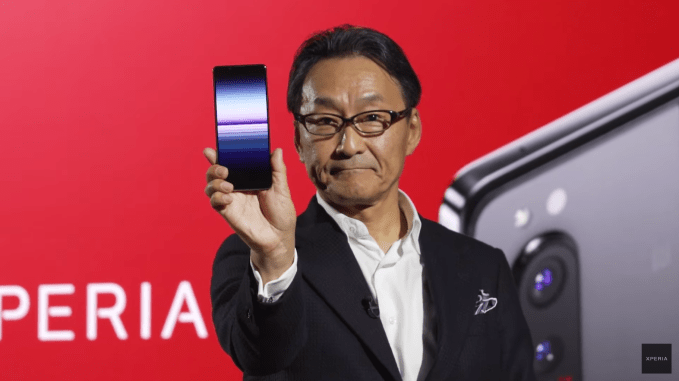
Kishida had another 5G handsets to tease: the Xperia Pro, a flagship handset aimed at video professionals. It features 5G mm wavelength technology for improved capability to stream high-resolution video, as well as a handy micro HDMI port for easy plugging in of other high end camera kit.
Sony touted tests it’s done with U.S. carrier Verizon (TechCrunch’s parent company) to use the forthcoming 5G handset for live streaming of live sports events.
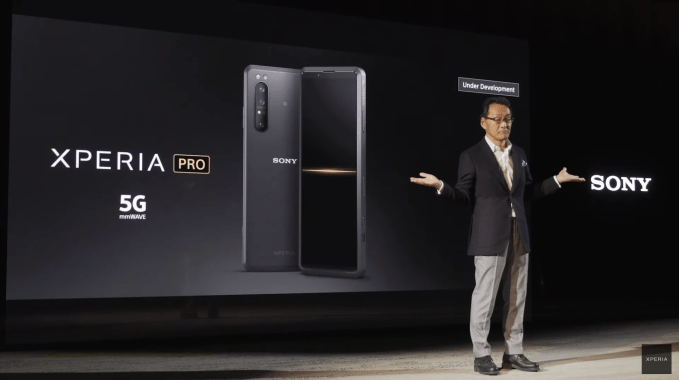
“Sony’s expertise and long history in providing profession digital imaging solutions is very unique,” added Kishida. “Only Sony has such deep and well established relationships, and we are bringing decades of experience to an end-to-end solution — from professional content creation to mobile communications technology in 5G.”
There was a mid-range smartphone announcement, too, also shipping from Spring onwards: The Xperia 10 II packs a 6″ display and also features a triple lens camera as well as water resistance.
Powered by WPeMatico
Lightspeed leads Laiye’s $42M round to bet on Chinese enterprise IT
Laiye, a Chinese startup that offers robotic process automation services to several major tech firms in the nation and government agencies, has raised $42 million in a new funding round as it looks to scale its business.
The new financing round, Series C, was co-led by Lightspeed Venture Partners and Lightspeed China Partners. Cathay Innovation, which led the startup’s Series B+ round and Wu Capital, which led the Series B round, also participated in the new round.
China has been the hub for some of the cheapest labor in the world. But in recent years, a number of companies and government agencies have started to improve their efficiency with the help of technology.
That’s where Laiye comes into play. Robotic process automation (RPA) allows software to mimic several human behaviors such as keyboard strokes and mouse clicks.
“For instance, a number of banks did not previously offer APIs, so humans had to sign in and fetch the data and then feed it into some other software. Processes like these could be automated by our platform,” said Arvid Wang, co-founder and co-chief executive of Laiye, in an interview with TechCrunch.
The four-and-a-half-year-old startup, which has raised more than $100 million to date, will use the fresh capital to hire talent from across the globe and expand its services. “We believe robotic process automation will achieve its full potential when it combines AI and the best human talent,” he said.
Laiye’s announcement today comes as the market for robotic automation process is still in nascent stage in China. There are a handful of startups looking into this space, but Laiye, which counts Microsoft as an investor, and Sequoia-backed UiPath are the two clear leaders in the market.
As my colleague Rita Liao wrote last year, it was only recently that some entrepreneurs and investors in China started to shift their attention from consumer-facing products to business applications.
Globally, RPA has emerged as the fastest growing market in enterprise space. A Gartner report found last year that RPA market grew over 63% in 2018. Recent surveys have shown that most enterprises in China today are also showing interest in enhancing their RPA projects and AI capabilities.
Laiye today has more than 200 partners and more than 200,000 developers have registered to use its multilingual UiBot RPA platform. UiBot enables integration with Laiye’s native and third-party AI capabilities such as natural language processing, optical character recognition, computer vision, chatbot and machine learning.
“We are very bullish on China, and the opportunities there are massive,” said Lightspeed partner Amy Wu in an interview. “Laiye is doing phenomenally there, and with this new fundraise, they can look to expand globally,” she said.
Powered by WPeMatico
Startups Weekly: What the E-Trade deal says about Robinhood
[Editor’s note: Want to get this weekly review of news that startups can use by email? Just subscribe here.]
How well do Robinhood’s financials stack up against incumbent online brokerages? While we wait for the seven-year-old company’s long-planned IPO, Alex Wilhelm examined Morgan Stanley’s big $13 billion purchase of E-Trade for fresh data comparison points. Robinhood has 10 million accounts — twice what E-Trade has — but it also appears to make much less money per user and has far fewer assets under management, as he covered for Extra Crunch. So while its fee-free approach has destroyed a key revenue stream for competitors, it still has to grow its own “order-flow” business into its private-market valuation.
One solution is to make the platform stickier via social features. On the same day as the E-Trade deal announcement, Robinhood launched a new Profiles feature to encourage users to share stock tips. Josh Constine explored the offering and where it is headed on TechCrunch, concluding that “Profiles and lists, and then eventually more social features, could get Robinhood’s users trading more so there’s more order flow to sell and more reason for them to buy subscriptions.”
Alex also took a look at a new report on fintech funding, which found last year was a peak overall — but skewed towards later-stage companies. Certainly, the wealth management segment is looking mature.
But the category is massive, with many more incumbents left to disrupt. What are fintech investors looking for? Check out our popular investor survey on this topic from November.

How your startup can use TikTok for growth
Fifth Wall’s Brendan Wallace: the proptech sector is hot despite WeWork
“Our mandate is any technology that can be strategic to the real estate industry,” the prolific investor told Connie Loizos in an extended interview for Extra Crunch this week. While WeWork may have depressed some investor interest, plenty of models are working great across various segments — so he and his partners are raising more funds. One of the hottest sectors, perhaps surprisingly, is in sustainable buildings. As Wallace details, public pressure, large-tenant pressure, large-investor pressure and new metro requirements have removed any choice that the industry has in the matter:
Make no mistake; we are front-and-center to what is happening in the real estate industry and the collision with technology, and this is the single-most-important thing that has happened to the real estate industry in the last five decades. The real estate industry is going to have to go carbon-neutral and that is brand-new.
Is this sector also your focus? Be sure to check out our survey of investors in construction robotics from last week to find out some of the latest opportunities, plus our overview survey of real estate and prop tech investors from November.
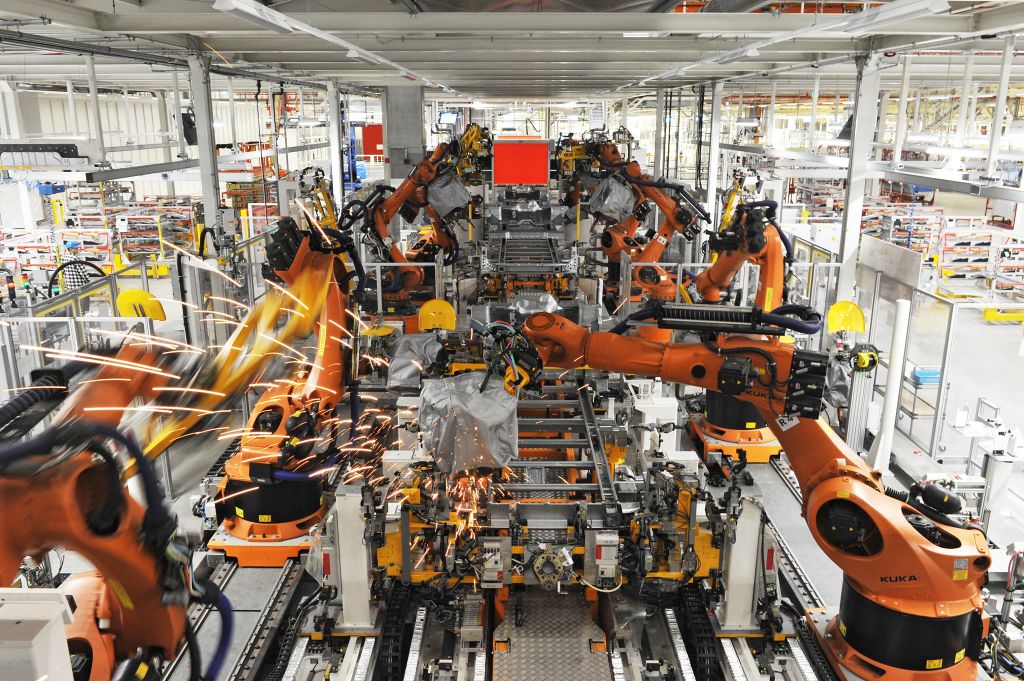
The future of manufacturing and warehouse robotics
Ahead of our big robotics conference at UC Berkeley in early March, we have been producing a whole series of surveys on robotics verticals. This week, our resident financial analyst Arman Tabatabai teamed up with our hardware editor turned conference organizer, Brian Heater, to do a series of interviews with VCs who are focused on warehouse and manufacturing robotics. Investors include:
- Rohit Sharma, True Ventures
- Ajay Agarwal, Bain Capital Ventures
- Rick Prostko, Comcast Ventures
- Fatima Husain, Comcast Ventures
- Shahin Farshchi, Lux Capital
- Cyril Ebersweiler, SOSV & HAX
- Kelly Coyne, Grit Ventures
Tell TechCrunch about gaming startups and remote work
Our media columnist Eric Peckham wants to feature your advice in two upcoming articles. If you have relevant expertise, click the links below and share your opinions.
- What are the best cities for gaming startups and how should gaming entrepreneurs compare which city is right for them?
- Have you helped lead a startup whose team is split 8-10 time zones apart between offices in Europe/Israel and the West Coast of the US? What tips do you have for others navigating this challenge?
Across the week
Do AI startups have worse economics than SaaS shops? (EC)
Elon Musk says all advanced AI development should be regulated, including at Tesla (TC)
SpaceX alumni are helping build LA’s startup ecosystem (EC)
Dear Sophie: I need the latest details on the new H-1B registration process (TC)
Tracking China’s astounding venture capital slowdown (EC)
The rise of the winged pink unicorn (TC)
Voodoo Games thrives by upending conventional product design (EC)
Ex-YC partner Daniel Gross rethinks the accelerator (TC)
How companies are working around Apple’s ban on vaping apps (EC)
Rippling starts billboard battle with Gusto (TC)
#Equitypod
This week was a fun combination of early-stage and late-stage news, with companies as young as seed stage and as old as PE-worthy joining our list of topics.
Danny and Alex were back on hand to chat once again. Just in case you missed it, they had some fun talking Tesla yesterday, and there are new Equity videos on YouTube. Enjoy!
This week the team argued about org-chart companies, debt raises, some of the items mentioned above, and much more. Details here.
Powered by WPeMatico
This Week in Apps: HQ Trivia’s dramatic death, Android 11, Apple mulls a more open iOS
Welcome back to This Week in Apps, the Extra Crunch series that recaps the latest OS news, the applications they support and the money that flows through it all.
The app industry is as hot as ever, with a record 204 billion downloads in 2019 and $120 billion in consumer spending in 2019, according to App Annie’s recently released “State of Mobile” annual report. People are now spending 3 hours and 40 minutes per day using apps, rivaling TV. Apps aren’t just a way to pass idle hours — they’re a big business. In 2019, mobile-first companies had a combined $544 billion valuation, 6.5x higher than those without a mobile focus.
In this Extra Crunch series, we help you keep up with the latest news from the world of apps, delivered on a weekly basis.
This week we look at the sad, strange death of HQ Trivia, spying app ToTok getting booted from Google Play (again!), Android 11, an enticing Apple rumor about opening up iOS further to third-party apps, Google Stadia updates, the App Store book Apple wants banned, apps abusing subscriptions and much more.
Headlines
HQ Trivia burns to the ground
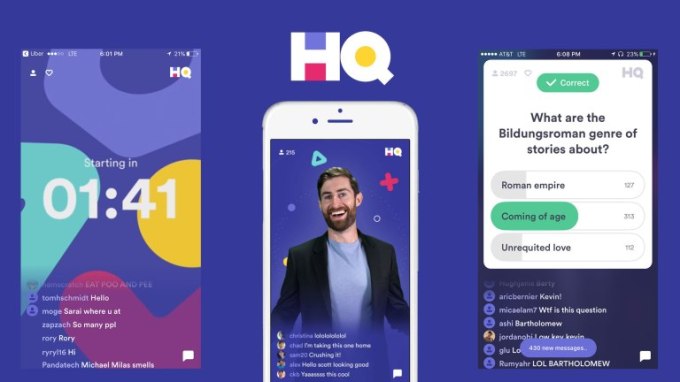
Once-hot HQ Trivia believed it had invented a new kind of online gaming — live trivia played through your phone. Investors threw $15 million into the company hoping that was true. But the novelty wore off, cheaters came in, prize money dwindled and copycats emerged. Then co-founder Colin Kroll passed away and things at HQ Trivia got worse, including a failed internal mutiny, firings and layoffs. This week, HQ Trivia announced its demise. It then hosted one last, insane night of gaming featuring drunken and cursing hosts who sprayed champagne, called out trolls and begged for new jobs. (Sure, because they exited this one so professionally.)
Powered by WPeMatico




